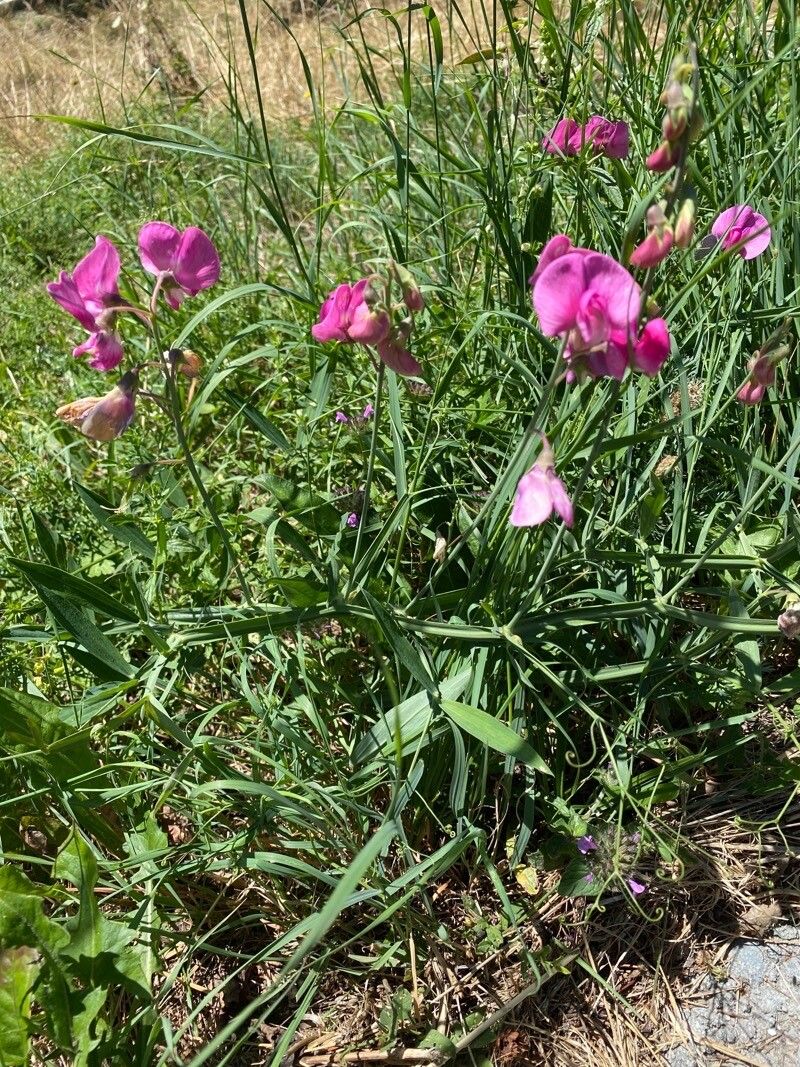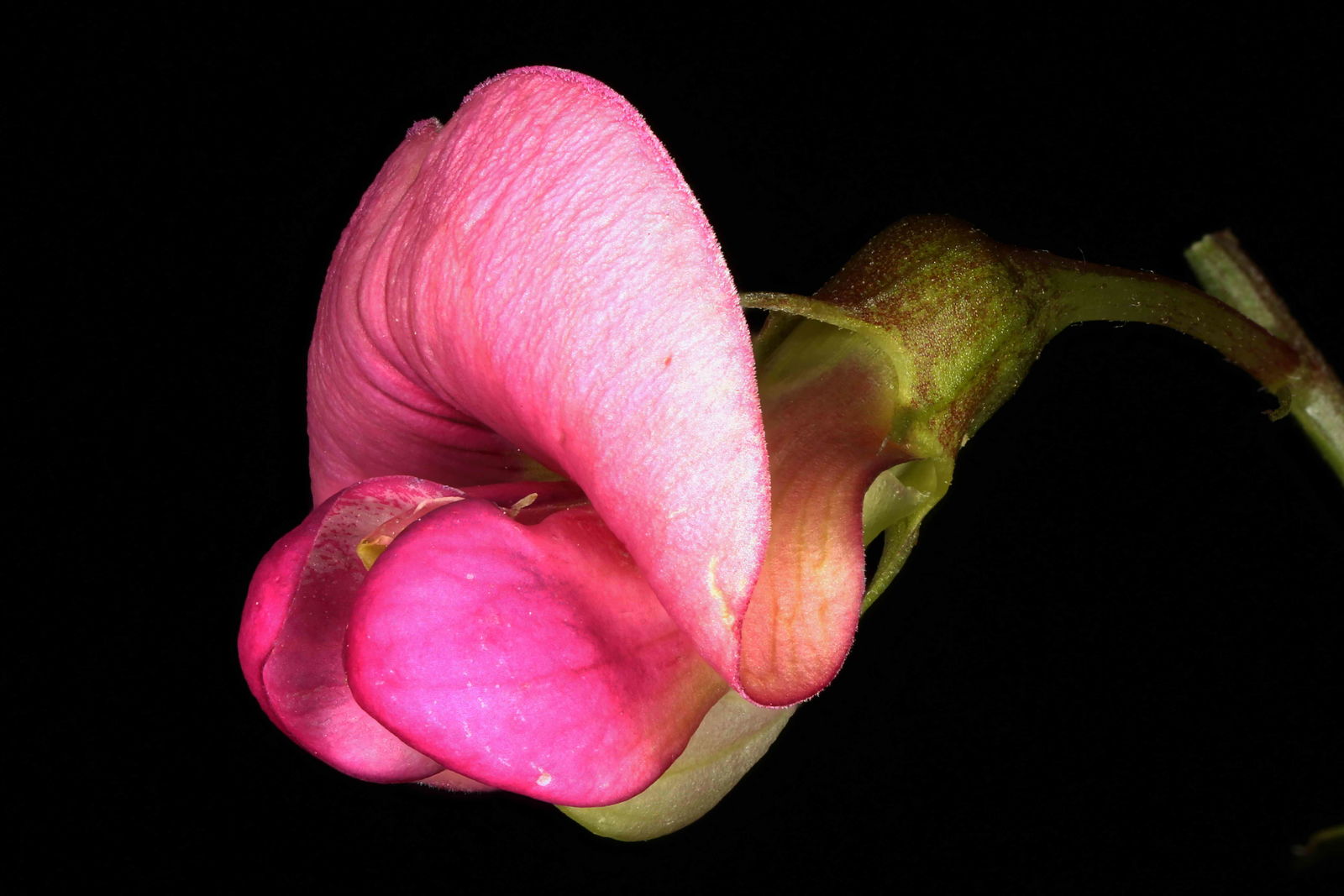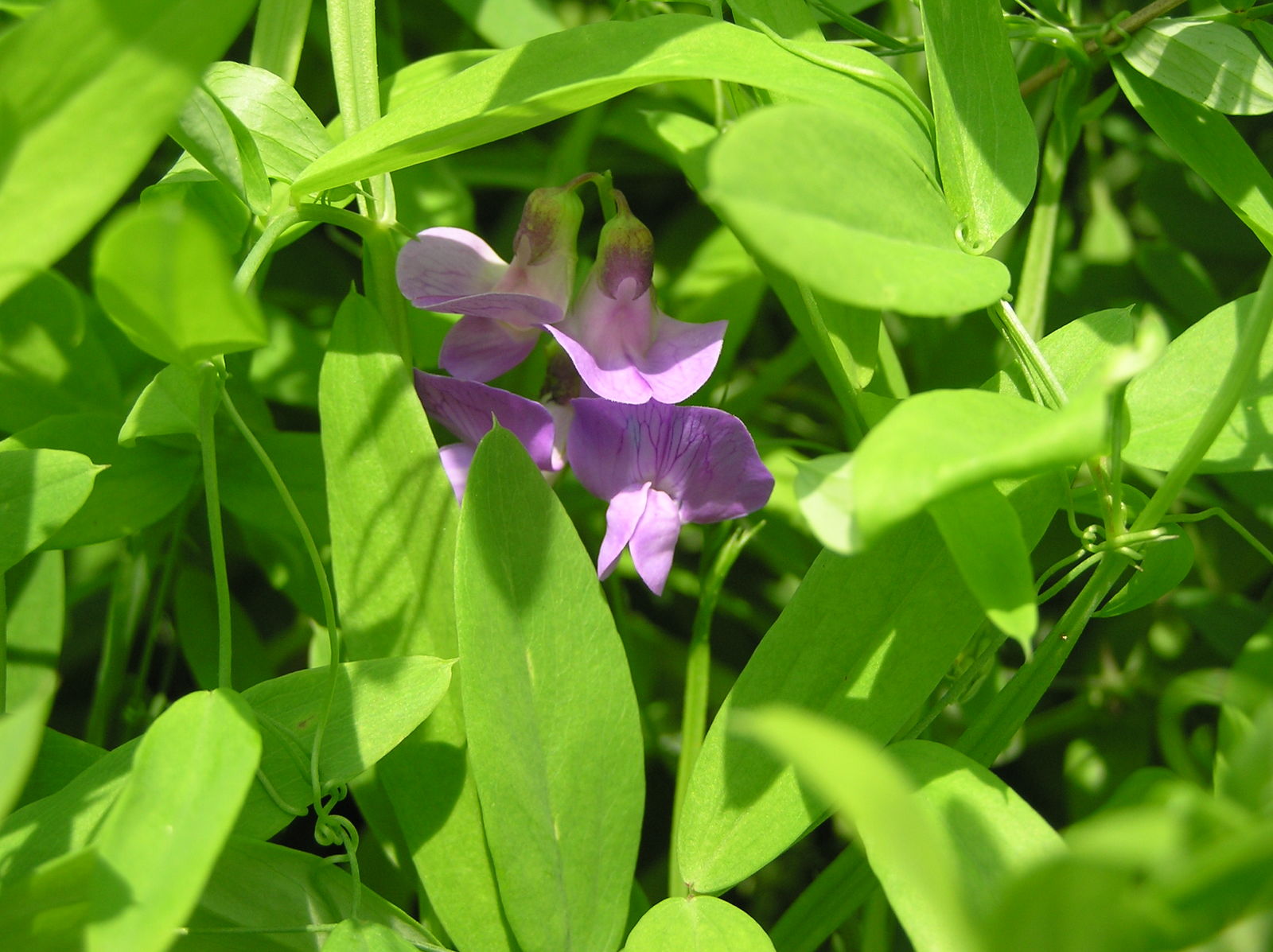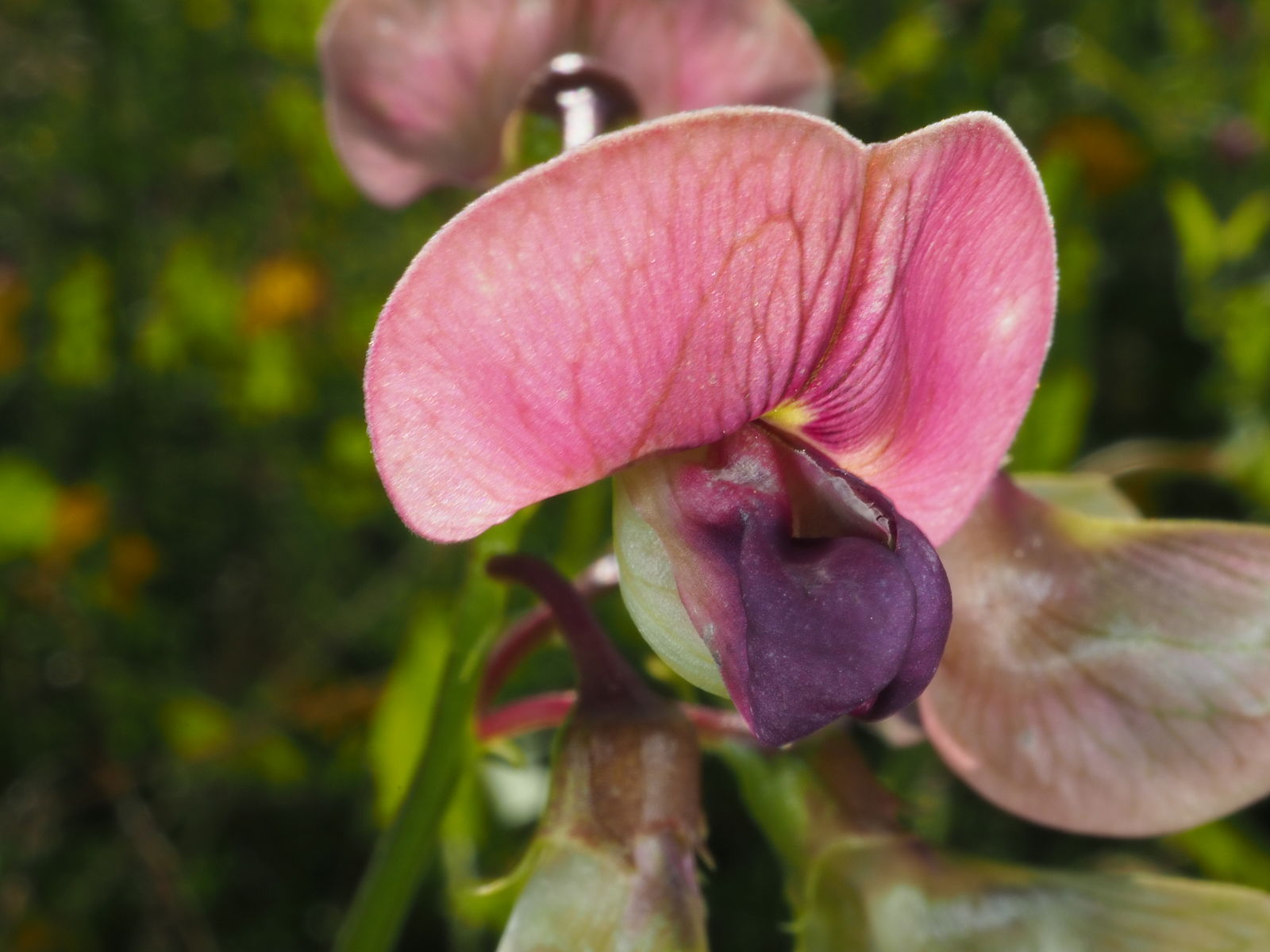Red everlasting pea
lathyrus sylvestris
Also known as: ["Everlasting pea","Wild pea"]
Overview
A perennial climbing plant with showy pinkish-red flowers and pinnate leaves, native to Europe and parts of Asia.
Benefits & Perks
["long-flowering","wildlife attractant (bees, butterflies, birds)","drought tolerant","fragrant flowers"]
Botanical Classification
| Phylum: | Magnoliophyta |
| Class: | Magnoliopsida |
| Order: | Fabales |
| Family: | Fabaceae |
| Genus: | Lathyrus |
| Botanical Name: | Lathyrus sylvestris |
Plant Characteristics
Basic Information
- Category: Flowers
- Suitable Location: garden border, trellis, or container with support
- Suitable For:
- Is Weed: No
- Allergenicity: low
Environmental Needs
- Climate: {"temperatureRange":"5–30°C"}
- Hardiness: {"zones":"4–9"}
- Misting: rarely required, only if ambient humidity is very low
- Drainage: Well-draining to prevent waterlogging.
- Soil Type: Rich, loamy soil with good organic matter; well-draining.
Maintenance Level
- Maintenance Level: moderate
- Toughness Level: moderate
- Pruning Frequency: Annually in late winter or early spring; light pruning can be done after flowering.
- Pruning Intensity: Moderate; remove up to one-third of old growth to rejuvenate the plant.
Care Details
Ideal Sunlight Coverage:
Full sun (6–8 hours/day) with some afternoon shade in hot climates; adjust for seasonal light changes.
Sunlight Tolerance Tips:
Acclimate plants gradually to intense sunlight; protect from harsh afternoon sun to prevent scorching; adjust placement based on indoor/outdoor conditions.
Care Requirements
Care Difficulty
easymoderate
Sunlight
full sun to partial shade
Rotate plant for even growth; use sheer curtains to filter intense light; avoid direct sun on leaves.
Watering
every 7–10 days during active growth, reduce in winter
Water thoroughly but allow soil to dry between waterings; avoid overhead watering to prevent fungal issues.
Soil
well-drained, fertile loam with added organic matter
pH: Slightly acidic to neutral (pH 6.0–7.0).
Ensure soil is loose and airy; avoid compacted soil; enrich with organic matter annually.
Temperature
Prefers 60–75°F (15–24°C); tolerates cooler temperatures but avoid frost; adjust for seasonal changes.
Monitor temperature extremes; adjust care seasonally; protect from sudden changes.
Fertilizing
every 4–6 weeks during growing season
Fertilize sparingly to avoid overfeeding; apply after watering to prevent root burn; stop in late autumn.
Propagation
Methods
Stem cuttings or seed; stem cuttings are faster and more reliable.
Step-by-Step Propagation Guide
- Take 4–6 inch cuttings.
- Remove lower leaves.
- Dip in hormone (optional).
- Plant in medium.
- Keep moist.
Best Time: Spring or early summer when the plant is actively growing.
Environment
Warm, humid environment with indirect light; maintain consistent moisture.
Medium
Well-draining potting mix with perlite or sand; can also root in water.
Hormone
Optional but recommended for faster rooting.
Timeline
Roots in 2–4 weeks; establish in new pot within 2–3 months.
Tools Needed
Pruners, rooting hormone, small pots, well-draining mix.
Quick Tips
Use healthy, non-flowering stems; maintain humidity with a plastic bag; avoid direct sun.
Pruning & Repotting
Pruning Guide
Method
Cut stems back to a healthy bud or lateral branch; remove crossing or crowded stems.
Pruning Plan
Prune to maintain shape, encourage bushier growth, and remove dead or weak stems.
Tools
Pruning shears, sterilizing solution, gloves.
Checklist
Sterilize tools; prune dead/damaged stems; shape the plant; clean up debris.
Repotting Guide
Best Season
Early spring before new growth begins.
Pot Size
One size larger pot (e.g., +2 inches in diameter); ensure good drainage.
Method
Use fresh well-draining soil; gently tease out crowded roots; place in a slightly larger pot.
Suggestions
Repot every 2–3 years or when roots fill the pot; beneficial for growth and health.
Checklist
Prepare new pot with drainage holes; trim roots if needed; use fresh soil; water after repotting.
Advanced Care Tips
Watering Mastery
Watering Checklist
Check soil moisture; water deeply; ensure drainage; avoid wetting leaves.
How to Apply Water Properly
Water at the base of the plant, ensuring moisture reaches the root zone; water early in the day to minimize evaporation and fungal growth.
Watering Schedule Tips
Water deeply once the top inch of soil feels dry; reduce frequency in winter to prevent root rot.
Soil Improvement
Add compost or well-rotted manure; mix in perlite or sand for drainage; avoid heavy clay.
Temperature Stress Management
Signs of Temperature Issues
Wilting, yellowing leaves, stunted growth, or bud drop in extreme heat or cold.
Cold Stress
Slows growth, may cause leaf damage or dieback in prolonged cold; vulnerable to frost.
Solution: Protect with mulch; move indoors or cover during frost; avoid cold drafts.
Hot Stress
Leaves may wilt, scorch, or drop; reduced flowering in excessive heat.
Solution: Provide shade during peak heat; increase watering; use mulch to retain moisture.
Fertilizing Guide
Fertilizing Checklist
Check fertilizer type; dilute correctly; apply during active growth; avoid winter feeding.
Fertilizing Method
Use balanced liquid fertilizer diluted to half strength every 4–6 weeks during growing season; avoid fertilizing in winter.
Common Problems & Solutions
Toxicity Warning
Cats
Slightly ToxicCats are also susceptible to the neurotoxic effects of Lathyrus sylvestris if they consume the seeds or young pods. The toxic compounds can cause neurological disturbances and gastrointestinal distress.
⚠️ Symptoms:
🌿 Toxic Parts:
⚡ Toxic If:
if eaten
Dogs
Slightly ToxicIn dogs, ingestion of Lathyrus sylvestris seeds or young pods can lead to gastrointestinal upset and potential neurological effects due to the presence of neurotoxic amino acids similar to those affecting humans.
⚠️ Symptoms:
🌿 Toxic Parts:
⚡ Toxic If:
if eaten
Humans
Slightly ToxicLathyrus sylvestris contains compounds that can cause lathyrism, a neuromuscular disorder, when consumed in large quantities over a prolonged period. The toxic effects are primarily due to the presence of beta-oxalyl-DL-amino acid (BOAA) and other neurotoxic amino acids.
⚠️ Symptoms:
🌿 Toxic Parts:
⚡ Toxic If:
if eaten
Frequently Asked Questions
Q: Is Lathyrus sylvestris edible?
A: While parts of the plant are edible, consumption is not recommended due to potential toxicity.
Q: How does this plant grow?
A: It is a climbing vine that requires support and thrives in full sun to partial shade.
Q: Does it attract wildlife?
A: Yes, it attracts bees, butterflies, and birds due to its nectar-rich flowers.
Quick Reference
| Family: | Fabaceae |
| Care: | easy |
| Light: | full sun to partial shade |
| Water: | every 7–10 days during activ |
Get Expert Care Tips
Download the Plantious app for personalized care reminders and plant identification!
Google Play App Store








